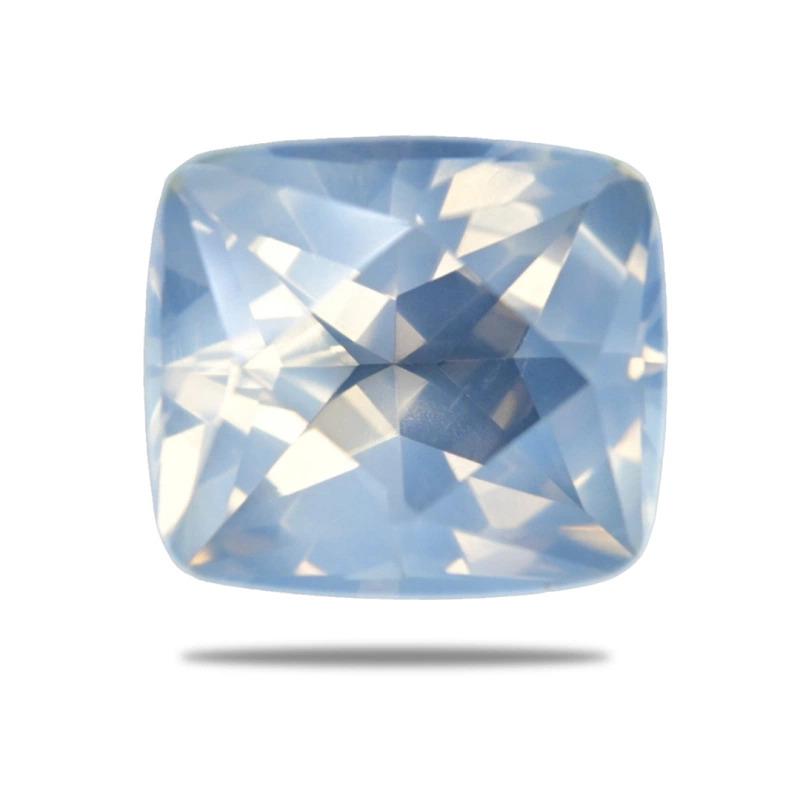
June Awo Abo: Pearl, Alexandrite & Ɔsram Abo
Asram abien pɛ na ɛwɔ hɔ a aban abo abiɛsa na ɛwɔ hɔ, na June yɛ emu biako! Dɛn ne aboɔden abo 3 a wɔde bɛyɛ June? June awo abo a aban no de di dwuma ne ɔsram abo, ahwehwɛ, ne alexandrite.
Wɔfrɛ June Junius anaa lunius wɔ tete Roma, na wɔde aware nyamewa, Juno, anaa Latin kasa iuniores a ɛkyerɛ “mmerante” din too so.
Tete afahyɛ ahorow a wodi wɔ June mu no bi ne Rosalia (roses afahyɛ), Vestalia (a wɔde hyɛ ogya dan nyamewa Vesta anuonyam na wɔsan tew Roma ho), ne awɔw bere mu owiatɔe (awɔw bere mu da a edi kan).
Wɔda so ara di awɔw bere mu owiatɔe nnɛ, ne nnɛyi June nnapɔnna te sɛ Agya Da, LGBTQ+ Ahantan Ɔsram, ne Amanaman Ntam Mmofra Da.
June gyina hɔ ma anigye, kari pɛ, ne mmerantebere ne mmabaa. Ɛne aware nso wɔ abusuabɔ, na ayeforohyia bere no du ne mpɔmpɔn so wɔ June mu.
Nea ɛda saa nsusuwii ahorow yi adi ne June awo abo abiɛsa no: alexandrite, ahwehwɛ, ne ɔsram abo. Ɛnnɛ, yɛbɛkɔ akɔhwɛ abakɔsɛm, agyapadeɛ, ne atwetwe a ɛwɔ June awoɔ aboɔ yi mu.
video: https://www.youtube.com/watch?v=v2PJNAbPgU8
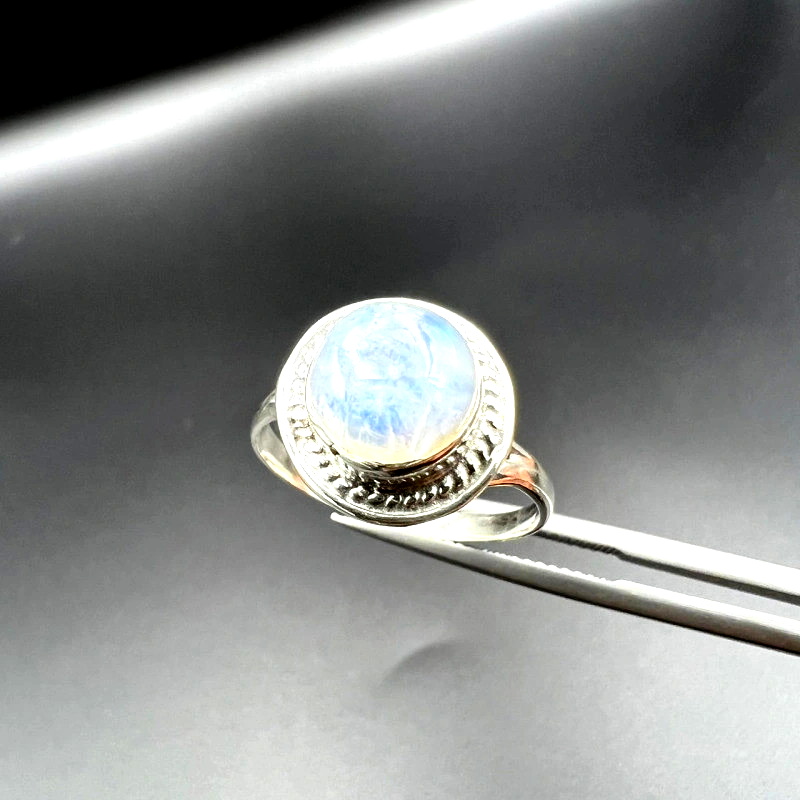 Mfonini a ɛwɔ atifi hɔ no: Ɔsram abo mpɛtea
Mfonini a ɛwɔ atifi hɔ no: Ɔsram abo mpɛtea
Abakɔsɛm & Amammerɛ mu Nkyerɛase a Ɛfa June Awo Abo Ho
Ebia woresusuw ho sɛ: dɛn nti na awo abo 3 wɔ hɔ ma June? Wiɛ, na ɛnyɛ bere nyinaa na na wɔyɛ baasa.
June Awo Bo no Sesa Bere Kɔ so
Awo abo a edi kan a wɔahyehyɛ a wonya fii Bible nkyerɛwee mu no kyerɛɛ June awo abo ase sɛ agate anaa emerald , a mprempren ɛyɛ May awo abo .
Bere a Tiffany & Co. fii nnɛyi awo abo a wɔahyehyɛ a wɔahyɛ da ayɛ ase no, wotintim kratawa bi a wɔato din “Gregorian Birthstone Poems” wɔ 1870 mu, a wɔkyerɛe sɛ “ɔkyerɛwfo bi a wonnim no” na ɔkyerɛwee, a na wɔde ahwehwɛ a wɔde yɛ June.
Aban mmara a edi kan a wɔahyehyɛ a wɔahyɛ da ayɛ, a National Association of Jewelers (mprempren Jewelers of America) yɛe wɔ 1912 mu no, dii kan kyerɛw ahwehwɛ a ɔsram abo ka ho sɛ nea wɔde besi ananmu. Saa din a wɔahyehyɛ yi nso daa adi wɔ 1937 UK din a efi Ɔman Sikakɔkɔɔ Adwumfo Fekuw hɔ no mu.
Jewelry Industry Council of America sesaa 1912 list no wɔ 1950 mfe no mu de alexandrite kaa ho maa June.
Dɛn nti na June awobo sesae? Ná Alexandrite yɛ aboɔden abo foforo koraa, na nsusuwii biako ne sɛ na agudeyɛfo gye di sɛ alexandrite dɔɔso sen ahwehwɛ, a ɛnyɛ nokware nnɛ.
Afei, momma yɛnhwɛ aboɔden abo a ɛsom bo fã biara ’s ankorankoro abakɔsɛm.
 Mfonini a ɛwɔ atifi hɔ no: afeha a ɛto so 3 tete Romafo sika kɔkɔɔ ti nhwi agude a wɔde nhwene, emerald, ne safir ayɛ; Wɔde kyerɛe wɔ Britania Tete Nneɛma Akorae | Mfonini no fi: Vassil, Ɔmanfo de
Mfonini a ɛwɔ atifi hɔ no: afeha a ɛto so 3 tete Romafo sika kɔkɔɔ ti nhwi agude a wɔde nhwene, emerald, ne safir ayɛ; Wɔde kyerɛe wɔ Britania Tete Nneɛma Akorae | Mfonini no fi: Vassil, Ɔmanfo de
Nhwehwɛ a Ɛwɔ Tete Anibuei ne Anansesɛm Mu
Nhwehwɛ ho kyerɛwtohɔ a akyɛ sen biara a wɔakyerɛw no fi afe 2206 A.Y.B., bere a wɔde nsu pa mu nhwene maa Chinafo ahemfo akyɛde no. Ahwehwɛ agude a akyɛ sen biara a wonim a wɔyɛe bɛyɛ afe 420 A.Y.B. Fam tutufo adanse nso kyerɛ sɛ na wɔde ahwehwɛ a wɔfrɛ no mother of pearl dii dwuma ansa na abakɔsɛm reba wɔ Indus Bon ne Sri Lanka.
Tete Helafo de nhwene bataa kɛseyɛ ho, na na wogye di sɛ awo abo no fi Aphrodite, ɔdɔ nyamewa a wɔwoo no saa ara fi po mu sɛnea anansesɛm kyerɛ no nusu mu. Saa ara na tete Japanfo anansesɛm ahorow kyerɛe sɛ nhene fi nsu mu nhwene anaa asukɔtweaa nusu mu.
Tete Romafo frɛɛ nhwene margaritae anaa unio . Wɔde nhene dii dwuma sɛ dibea ho sɛnkyerɛnne, na na adefo ne atitiriw nkutoo na wɔhyɛ.
Wɔ tete Misraim , na wɔde nhwene bata Isis, ayaresa nyamewa ho, na wɔde guu adamoa mu. Asɛm biako a agye din ne sɛ Cleopatra dii nkonim wɔ kyakyatow bi a ɔne Marc Antony bɔe mu denam n’ahwehwɛ asomuade biako a ɔde guu vinegar mu na ɔnom no so!
Hindufo anansesɛm bi ka sɛ na nhwene yɛ ɔsram so bosu a ahwe ase a efi ɔsram so hwe ase. Hindufo anansesɛm foforo a ɛfa ahwehwɛ no mfiase ho ne sɛ onyame Krishna huu ahwehwɛ a edi kan no na ɔde maa ne babea sɛ ayeforohyia akyɛde de bɔɔ ne ho ban na wanyɛ okunafo na wahwɛ ahu sɛ aware no bedi yiye na akyɛ.
Bio nso, ahwehwɛ mfiase wɔ Vedic nkyerɛwee ahorow mu ne sɛ Asase nsu ne ɔsoro ahoɔden na esusuw ahwehwɛ no ho, afei wɔde anyinam nyinsɛn no.
Wɔ Islam mu no, Kur’aan ka nhene ho asɛm sɛ ɛhyɛ Paradise fɛ sɛ nnuaba ne abotiri a wɔde ma wɔn a wɔhyɛn soro.
Nkyerɛase afoforo a wɔde mae wɔ June awobo yi asekyerɛ ho ne ahobammɔ a wɔde bɔ fi ogya ho wɔ tete China ne ahotew ho mfonini a wɔyɛ wɔ Europa.
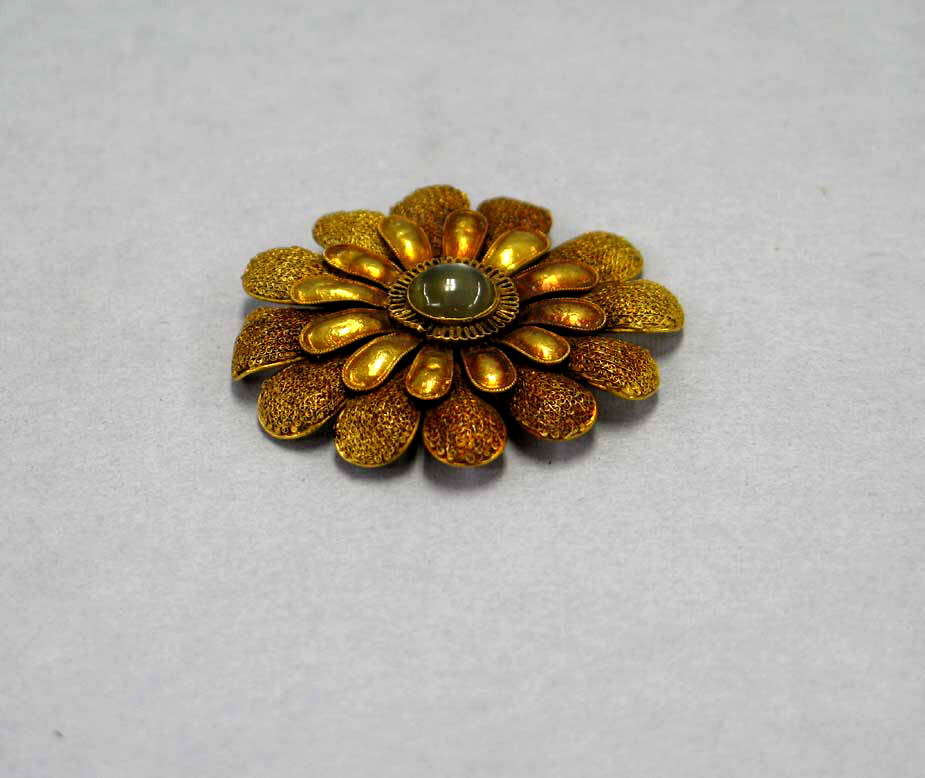 Mfonini a ɛwɔ atifi hɔ no: Chinafo sika kɔkɔɔ agude a wɔde ɔsram abo ayɛ, a wɔkyerɛw no 960-1279 Song Ahemman; Wɔde kyerɛe wɔ Metropolitan Museum of Art | Mfonini no fi: Met Museum, Ɔmanfo de
Mfonini a ɛwɔ atifi hɔ no: Chinafo sika kɔkɔɔ agude a wɔde ɔsram abo ayɛ, a wɔkyerɛw no 960-1279 Song Ahemman; Wɔde kyerɛe wɔ Metropolitan Museum of Art | Mfonini no fi: Met Museum, Ɔmanfo de
Tete Kosi Nnɛyi Ɔsram Abo Abakɔsɛm
Moonstone din no fi ne adularescence, a ɛte sɛ nea efi mu hyerɛn te sɛ ɔsram hann a ɛyɛ brɛoo no.
Tete Romafo anansesɛm ahorow ka sɛ ɔsram abo na ɛbae bere a ɔsram hann a ɛyɛ hyew yɛɛ den na ɔsram nyamewa Diana de maa no akyɛde no. Wɔhwɛɛ ɔbo no mu sɛ wɔrebɛhunu Diana na wɔanya ne dɔ ne ne nyansa.
Tete Helafo frɛɛ ɔbo no Aphroselene , Aphrodite ne ɔsram nyamewa Selene portmanteau. Wɔde ɔsram abo nso bataa Hecate, nkonyaayi nyamewa, ne Artemi, abɔmmɔ ne ahotew nyamewa ho.
Wɔ tete India , na wɔka sɛ ɔsram abo hyerɛn anaasɛ ɛyɛ kusuu fi ɔsram nyamewa Chandra (anaa ɔsram nyame Ganesh) moma so bere a ɔsram no reyɛ ayɛ kɛse anaasɛ ɛrekɔ fam no.
Sɛnea Asiafo anansesɛm bi kyerɛ no, ɔsram abo bruu hohoro kɔ mpoano mfe 21 biara. Tete Asia Apuei famfo de ɔsram abo sɛn nnua so de hyɛ otwa adwuma pii ho nkuran na na wogye di sɛ aboɔden abo no mu hann a ɛsakrasakra no kyerɛ sɛ honhom bi te mu.
Akwantufo nso de ɔsram abo a wɔde abɔ wɔn ho ban, na ɛkanyan June awobo no abodin “akwantufo bo.”
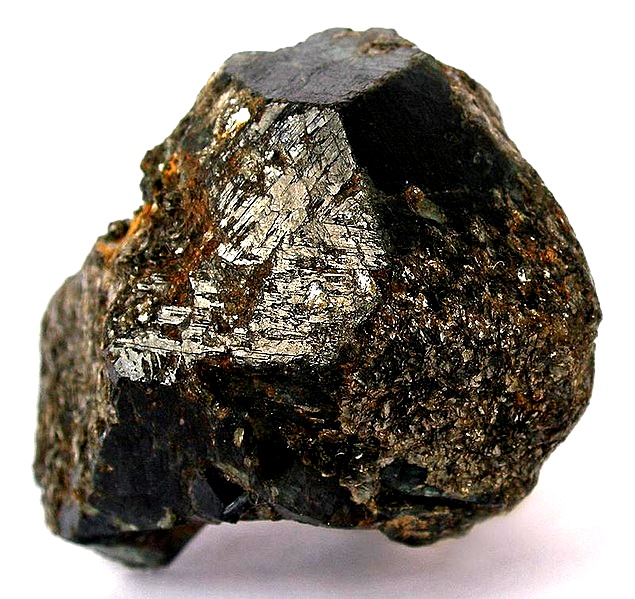 Mfonini a ɛwɔ atifi hɔ no: Alexandrite a efi Urals Mantam, Russia, a ɛyɛ den, anoano bi asɛe, emu yɛ aboɔden abo, nanso ne nyinaa akyi no, ɛkyerɛ kɔla a ɛsakra; Wɔde ka ho ne label a wɔkyerɛw no 1850 | Mfonini no fie: Rob Lavinsky, iRocks.co m – CC-BY-SA-3.0
Mfonini a ɛwɔ atifi hɔ no: Alexandrite a efi Urals Mantam, Russia, a ɛyɛ den, anoano bi asɛe, emu yɛ aboɔden abo, nanso ne nyinaa akyi no, ɛkyerɛ kɔla a ɛsakra; Wɔde ka ho ne label a wɔkyerɛw no 1850 | Mfonini no fie: Rob Lavinsky, iRocks.co m – CC-BY-SA-3.0
Alexandrite Akwantu a Ofii Russia Kɔ Wiase
Alexandrite ne June awobo a wohuu no nnansa yi ara. Wohuu aboɔden abo kɔkɔɔ ne ahabammono a ɛsakra kɔla no wɔ Russia Ural Mmepɔw so wɔ 1834 mu na wɔde Alexander II, a ɛrenkyɛ ɔbɛba Czar wɔ n’awoda a ɛto so 16 a ɛreba no din too so.
Ɛsono nsɛm a ɛfa onii a odii kan huu alexandrite na ɔtoo ne din no ho. Na ɛyɛ Finlandni aboɔden abo ho ɔbenfo Nils Gustaf Nordenskiöld, Ural Mine sohwɛfo Vasilevich Kokovin, Germanni aboɔden abo ho ɔbenfo Gustav Rose, anaa Russiani aboɔden abo ho ɔbenfo Count L. A. Perovskii. Ɛmfa ho nea ɛbɛba biara no, Count L. A. Perovskii de aboɔden abo no maa Alexander II maa n’awoda wɔ April 29.
Russia nkutoo na na wonya fibea, ɛwom sɛ ɛkame ayɛ sɛ na wɔn atopae ahorow no da mpan wɔ 1890 mfe no mu de. Brazil bɛyɛɛ fibea foforo wɔ 1987 mu, na Sri Lanka ne Zimbabwe dii akyi.
Russiafo alexandrite bɛyɛɛ anuonyam ne ɔman ahantan ho sɛnkyerɛnne, na wɔ akwanhyia mu no, ɛdaa Russia asraafo kɔla adi. Wɔbɔɔ amanneɛ sɛ Alexander II hyɛ alexandrite ring talisman da biara da.
Amammerɛ afoforo kyerɛɛ June awobo no kɔla a ɛsakra no ase sɛ asiane ho sɛnkyerɛnne.
Abakɔsɛm? Hwɛ. Afei yɛbɛhwɛ awoɔ abo yi kɔla ne ne su soronko yi yie.
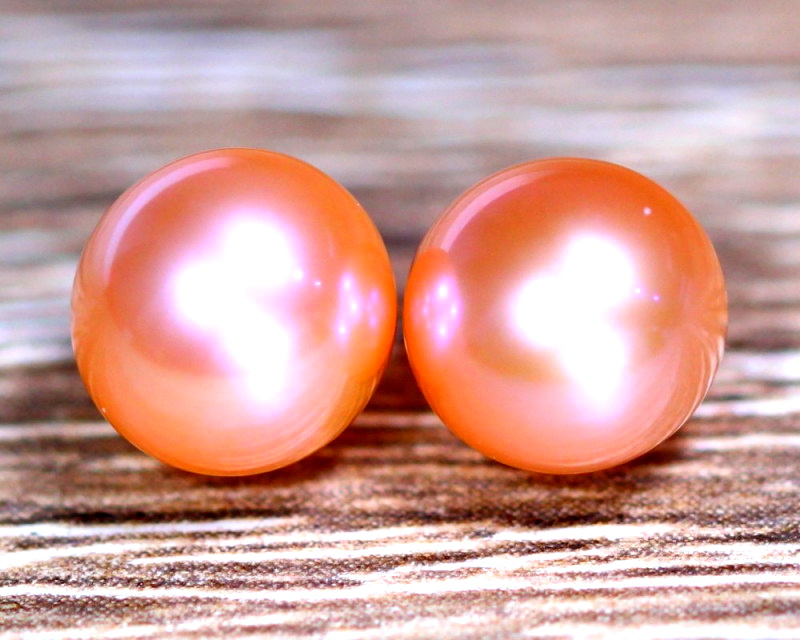 Mfonini a ɛwɔ atifi hɔ: Pink akoya pearls
Mfonini a ɛwɔ atifi hɔ: Pink akoya pearls
Nhwehwɛ: Po no mu Aboɔden abo
Akyinnye biara nni ho sɛ ɛyɛ June awobo “a ɛyɛ tete” no, akyinnye biara nni ho sɛ nhene yɛ soronko. Baako ne sɛ, wɔyɛ mineraloids (ɛnyɛ minerals) ne organic gemstones kakraa bi no mu biako , a ɛkyerɛ sɛ aboɔden abo a abɔde a nkwa wom yɛ.
Wɔ eyi mu no, wɔyɛ nhene wɔ nwansena mu bere a biribi a ɛhyɛ abufuw te sɛ anhwea kɔ abɔde no abon mu no. Mollusk no yi nacre a ɛyɛ ntoatoaso twa ade a ɛhyɛ abufuw no ho hyia. Nacre no yɛ calcium carbonate (calcite , aragonite , anaa n’abien nyinaa). Nacre layers a wɔasisi no ma signature “pearlescent” luster no ba.
Nea ɛho yɛ na wɔ June awobo yi mu no yɛ abɔde mu nhene nkutoo, a enyin wɔ wuram a nnipa mfa wɔn ho nnye mu. Aboɔden abo dodow no ara a wɔde yɛ nhwene nnɛ no yɛ nhwene a wɔayɛ no amammerɛ , a enyin saa ara nanso nnipa na wɔde nneɛma a ɛhyɛ abufuw no hyɛ nhwene mfuw mu.
Abɔde mu nhwehwɛ taa yɛ nketewa na wɔn nsusuwii nyɛ pɛpɛɛpɛ, bere a nhwehwɛ a wɔayɛ no amammerɛ taa yɛ kurukuruwa anaasɛ ɛbɛn kurukuruwa. Wubetumi ahu bere nyinaa sɛ wo nhwene awobo no fi bae denam kɔ a wode bɛkɔ lab te sɛ GIA so.
Pearl Ahorow & Ne Bo
Nhwene ahorow a agye din sen biara no bi ne:
Akoya : Ahwehwɛ a wɔde amammerɛ ayɛ a edi kan na ɛtaa yɛ nea ɛkorɔn sen biara; Nacre layer build-up a ɛyɛ brɛoo, a ɛkyerɛ sɛ ɛhyerɛn yiye na ɛyɛ kurukuruwa; Mpɛn pii no, wɔde bleached & dyed fitaa a rose overtones
Nsu pa : Nsu pa mu mmoa a wɔfrɛ wɔn mollusks na wɔyɛ, mpɛn pii no wɔyɛn wɔn; Mpɛn pii no, nacre a ɛyɛ den, ne nsɛso nyɛ pɛpɛɛpɛ, na ɛhyerɛn a ɛba fam nanso ne kɔla yɛ fɛ sen nkyene nsu mu nhwene
Nkyene nsu : Nkyene nsu mu nwansena na ɛyɛ, mpɛn pii no wɔyɛn wɔn; Abakɔsɛm mu gyinapɛn a ɛfa nhwene fɛfɛ ho
Kesee Fam Po : Wɔde nkyene nsu mu akraman a wɔn ano yɛ dwetɛ anaa sika kɔkɔɔ na ɛyɛ no; Nacre a ɛyɛ den & ɛsõ sen Akoyas; Mpɛn pii no, ɛyɛ fitaa, krim, anaa sika kɔkɔɔ kɔla
Tahitian : Wɔde nkyene nsu mu akraman a ano yɛ tuntum na ɛyɛ no amammerɛ wɔ French Polynesia titiriw; Nhwehwɛ tuntum a efi awosu mu nkutoo, nanso mpɛn pii no ɛyɛ ahabammono tuntum anaa fitaa; Ebetumi ayɛ fitaa, bruu, dwetɛ, kɔkɔɔ, anaa kɔkɔɔ; Kyerɛ iridescence a wɔfrɛ no “orient” .
Ade kɛse a ɛsom bo ne abɔde vs. amammerɛ — abɔde mu ahwehwɛ June awo abo yɛ kɛse pricier.
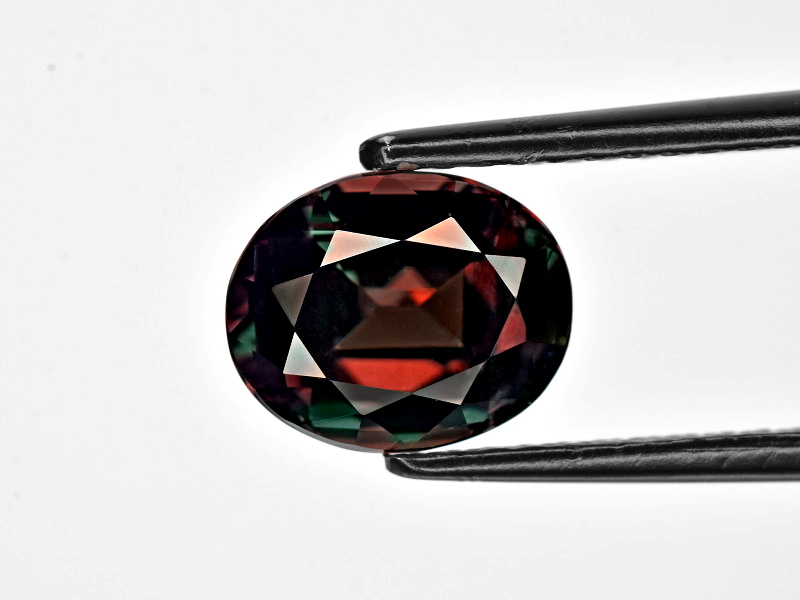
Alexandrite: Chameleon Aboɔden abo no
Alexandrite yɛ chrysoberyl ahorow a wɔde chromium si aluminium no bi ananmu. Wonim sɛ ɛsakra kɔla, na saa chromium efĩ no na ɛde ba.
Dɛn ne June awobo yi kɔla? Alexandrite a eye sen biara no yɛ ahabammono te sɛ emerald awia hann na ɛyɛ kɔkɔɔ-akuturuku wɔ incandescence ase, na ɛkanyan din “Emerald awia, ruby anadwo.” Eyinom mu dodow no ara yɛ Russiafo.
Kɔla afoforo a wɔsakra no bi ne kɔkɔɔ anaa peach kɔ pink a ɛyɛ hyew anaa bruu-ahabammono kɔ magenta. Sri Lanka alexandrite taa yɛ ngodua ahabammono, bere a Brazilfo alexandrite taa yɛ mmerɛw.
Ade titiriw a ɛma alexandrite bo yɛ den ne sɛnea kɔla sesa no ho tew, sɛnea ɛkɔ soro, ne sɛnea ɛte.
Cat’s eye alexandrites ho yɛ na titiriw na ɛsom bo.
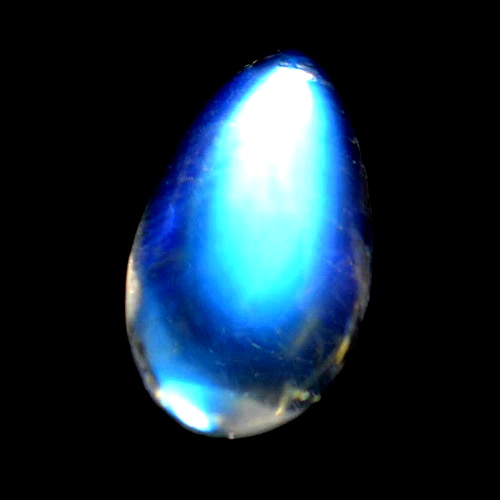
Ɔsram Abo: Ahoɔfɛ a Ɛhyerɛn & Kɔla ahorow
Wɔ June awo abo abiɛsa no mu no, ɔsram abo na wotumi nya no kɛse nanso ɛnyɛ nea ɛyɛ nwonwa koraa.
Ɔsram abo wɔ feldspars albite ne oligoclase anaa orthoclase a ɛsesa na ɛyɛ tratraa. Sɛ hann hyɛn saa nsensanee yi mu a, ɛma ɔsram abo sɛnkyerɛnnede a ɛsensɛn nsu mu, emu hyerɛn a wɔfrɛ no “adularescence.”
Ɔsram abo a eye sen biara no nni kɔla a ɛwɔ adularescence bruu kronkron. Nanso June awobo no kɔla nso ka nneɛma te sɛ peach, ahabammono, ne borɔdɔma ho.
Wɔtwitwa ɔsram abo dodow no ara yɛ no cabochons , nanso ɔsram abo a ɛwɔ afã horow no betumi de sintɔ ahorow asie na ama hyerɛn ayɛ kɛse. Ɔsram abo afoforo a wɔatwitwa no bi ne nhwiren ne nneɛma a wɔasen.
Ɛno ka mineralogy ne sɛnea ɛte ho asɛm, enti bere aso sɛ yɛhwehwɛ June awo abo ne nea ɛkyerɛ mu.
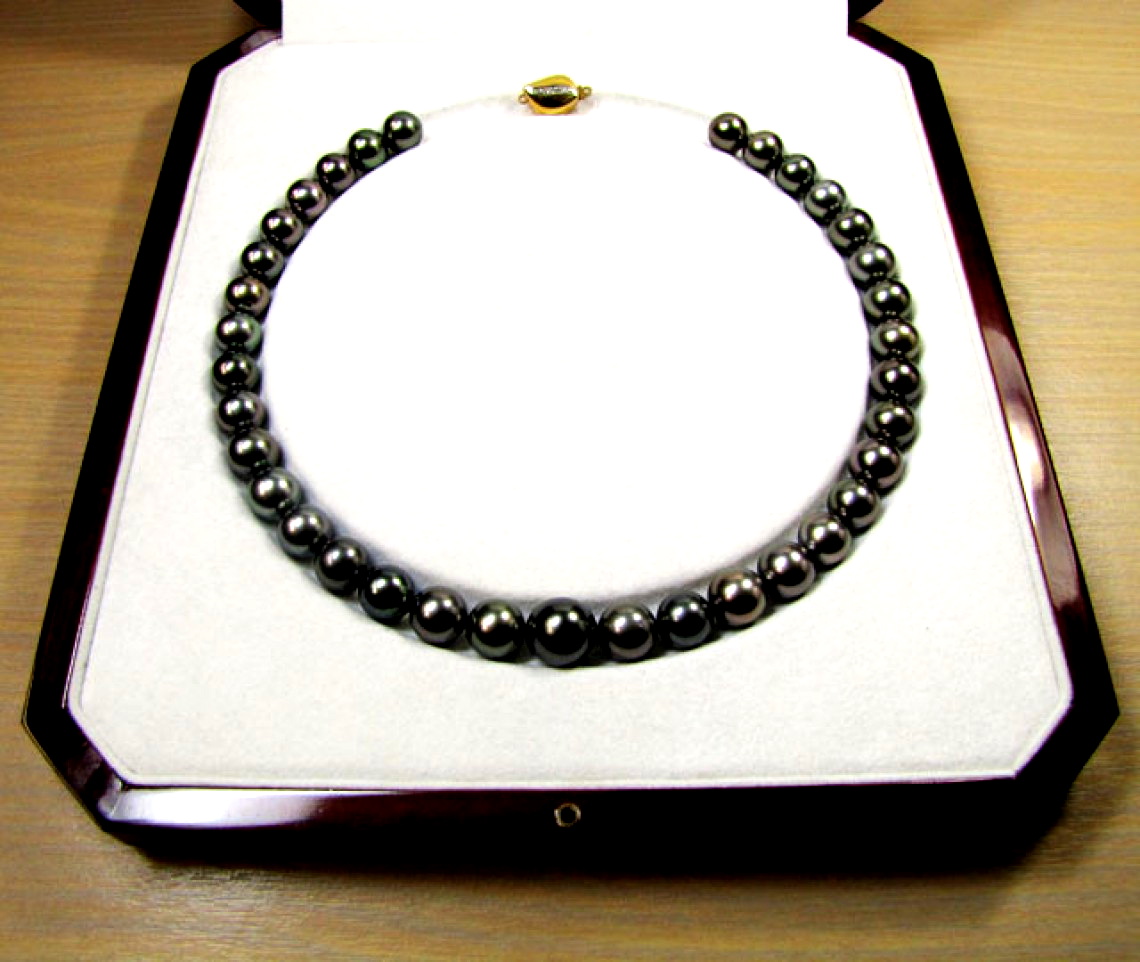 Mfonini a ɛwɔ atifi hɔ no: Tahitifo kɔnmuade a wɔde ahwehwɛ ayɛ
Mfonini a ɛwɔ atifi hɔ no: Tahitifo kɔnmuade a wɔde ahwehwɛ ayɛ
Nhwene: Nsɛnkyerɛnnede ne Nea Ɛkyerɛ
Wɔ abakɔsɛm nyinaa mu no, wɔde nhene abata ɔbea su, nyansa, ne nsakrae ho.
Ɔbea su
Sɛnea ahwehwɛ no te sɛ ethereal ne nsu mu mfiase no akanyan fekubɔ a ɛne ɔsram, ɔbea su, ne nsu wɔ. Ɔsram ne asorɔkye no bata atetesɛm mu mmea adwene a ɛne sɛ obi bɛbɔ ne nkate a ɛresakra no ho.
Wogye di sɛ Pearls ɔsram fã no ma nkate mu yɛ kɛse na ɛde wo bata honhom mu mmeae ahorow ho. Bio nso, wɔde abo a wɔde sa ahwehwɛ a wɔde sa yare di dwuma wɔ amanne kwan so ma awo, hormone a ɛnkari pɛ, ne awo a ɛnyɛ den.
Nyansa
Wɔayɛ nhwene ne nimdeɛ a wɔde bata ho no ho nhwɛso wɔ nsɛmfua “nyansa nhwene” a ɛkyerɛ nyansafo afotu anaasɛ “ntow nhwene ngu mprako anim” a ɛkyerɛ nyansam sɛ woremfa biribi a ɛsom bo mma wɔn a wɔrenkyerɛ ho anisɔ.
Wɔ Bible mu no, nhwene taa gyina hɔ ma mfaso a ɛwɔ nyansa so. Hindufo, Taofo, ne Buddhafo nyansapɛ ahorow ka “nhwene a ɛredɛw” ho asɛm sɛ ɛyɛ honhom fam nyansa ho sɛnkyerɛnne. Ná tetefo binom gye di sɛ nhwene kura asetra mu asuade ahorow na ɛkyerɛ awufo kwan wɔ owu akyi asetra mu.
June awobo no “hintaw” ne sɛnea wɔhyehyɛ no nso gyina hɔ ma nyansa a wonya fi osuahu mu.
Nsakrae a ɛba
Egye mfe pii ansa na nhwene ayɛ, na mpɛn pii no efi ase fi anhwea bi mu na ɛkɔ so yɛ aboɔden abo a ɛyɛ fɛ. Ɛnyɛ nwonwa sɛ June awo abo yi gyina hɔ ma nsakrae.
Bere a ɔrefa ɔkasafo a ɔkanyan Susan C. Young asɛm aka sɛ: “Oyster no afa nea mfiase no na ɛyɛ abufuw ne nea ɛde ne ho hyɛ mu no na ɔde di dwuma de ma ne bo yɛ kɛse.”
Ná tete Asiafo gye di sɛ nhwene yɛ ɔkra akwantu a ɛkɔ pɛyɛ mu ho sɛnkyerɛnne. Tarot akenkanfo de ahwehwɛ no bata The Fool akwantu no ho sɛ ɔkwan a wɔfa so hu wɔn ho.
 Mfonini a ɛwɔ atifi hɔ no: Alexandrite ring a wɔde accent diamonds ayɛ | Mfonini no fi: Christina Rutz, Flickr , CC-BY-SA-2.0
Mfonini a ɛwɔ atifi hɔ no: Alexandrite ring a wɔde accent diamonds ayɛ | Mfonini no fi: Christina Rutz, Flickr , CC-BY-SA-2.0
Alexandrite Ahintasɛm ne Nneɛma a Ɛfa Nneɛma Ho
Alexandrite nni lore pii saa, nanso ɛda so ara abɛyɛ nea ntease wom.
Te sɛ ahwehwɛ no, alexandrite yɛ nsakrae ho sɛnkyerɛnne . Wɔkyerɛ sɛ June bo no ma woyɛ foforo, na ɛboa wo ma wugye asetra mu nsakrae no tom.
Ɔbo a ɛsakra kɔla no nso gyina hɔ ma kari pɛ , sɛ́ ɛyɛ nkate mu kari pɛ, honam ne honhom fam kari pɛ, anaasɛ nea ɛkɔ so gyina fam ara kwa no.
Fekubɔ afoforo a wɔne alexandrite wɔ no bi ne anigye, nkonimdi, ne adebɔ.

Ɔsram Abo Nkyerɛase & Tumi
Moonstone ne nhwene kyɛ metaphysical su ahorow, a ɛne ɔbea su, nyansa, ne ɔsram wɔ abusuabɔ.
Abakɔsɛm mu no, nkonyaayifo de ɔsram abo dii dwuma wɔ ɔkwan a ɛyɛ nwonwa so de yɛɛ akɔmfosɛm a egyina ɔsram no mprempren fã so. Ahintasɛm ho animdefo pii de ɔsram abo di dwuma sɛ adwinnade a wɔde wɔn adwene si so bere a wɔredwennwen nneɛma ho no. Crystal ayaresafo kamfo ɔsram abo kyerɛ sɛ wɔmfa nsa nna a wontumi nna.
Moonstone nso kyerɛ ɔdɔ ne aware.
Indiafo atetesɛm biako fa awarefo a wɔde June awobo no hyɛ wɔn anom bere a ɔsram ayɛ ma no na ama wɔahu wɔn daakye . Ná tete Helafo ne Indiafo nyinaa gye di sɛ ɔsram abo ma ɛyɛ mmerɛw sɛ wobehu nneɛma a ɛbɛba daakye.
Wɔ wɔn a wonni ɔhokafo fam no, anansesɛm bi kae sɛ wubetumi atwetwe wo dɔ ankasa denam ɔsram bo a wode besi adwene no so bere a ɔsram ayɛ ma na wode asie wo nkyɛn akosi ɔsram a edi hɔ a ɛyɛ pɛ no so.
Asetra mu Mmere a Wɔde June Awo Abo Di Afahyɛ
Woresusuw nea ɛyɛ June awobo a agye din sen biara no ho?
Wɔ agude dodow no ara fam no, nhwene yɛ ɔhemmaa. Nanso, alexandrite abu so kɛse ma June awo abo nkaa, na ɔsram abo ne nea ɛwɔ hɔ kɛse.
Wɔ nsoromma mu hwɛ mu no, dɛn ne June ne Gemini awobo? Alexandrite yɛ Gemini awobo a eye sen biara a wɔwoo no June, na ɛma wɔn akɔnnɔ a ɛne sɛ wɔbɛkari pɛ no di mu.
Wɔ June-born Cancers , ɔsram abo ne ahwehwɛ bata Kokoram okyinnsoromma nipadua (ɔsram) a edi tumi no ho pɛpɛɛpɛ na ɛma sɛnkyerɛnne no abɔde mu nkate yɛ kɛse.
June awobo a wɔde ma akyɛde no yɛ adeyɛ a ntease wom a wɔde di ɔdɔfo bi afahyɛ.
Nneɛma a wubetumi apaw no fi June awo abo agude so kosi rose a wɔde awo abo ayɛ so (June nhwiren) so kosi June ahwehwɛ a nea wɔde akyɛde no ma no ani gye ho no ho mfonini so.
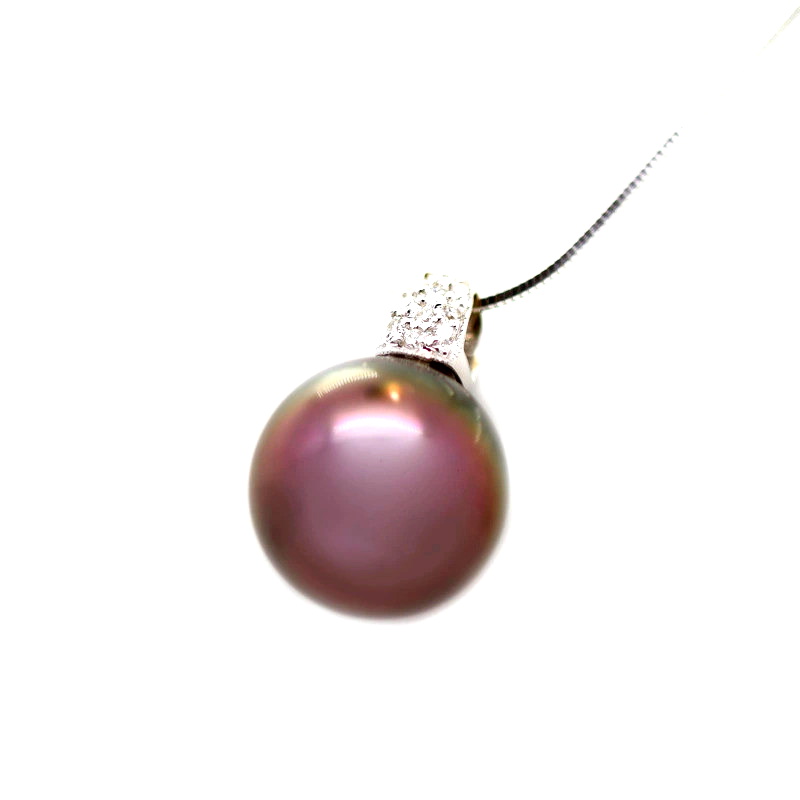 Mfonini a ɛwɔ atifi hɔ no: Nkyene nsu a wɔde ahwehwɛ ayɛ kɔnmuade a wɔayɛ no amammerɛ
Mfonini a ɛwɔ atifi hɔ no: Nkyene nsu a wɔde ahwehwɛ ayɛ kɔnmuade a wɔayɛ no amammerɛ
June Jewel Bɛn na Wopɛ paa?
June gyina hɔ ma ɔdɔ, anigye, ne kari pɛ, a alexandrite, ɔsram abo, ne ahwehwɛ yɛ ho nhwɛso. Saa aboɔden abo yi mu biara wɔ n’ankasa anigye, ne wɔn anim a ɛsono ne bo a ɛkɔ soro no kyerɛ sɛ June awobo a ɛyɛ pɛ wɔ hɔ ma sikasɛm nhyehyɛe biara!
搜尋Gemstone Encyclopedia
相關拍賣
相關文章
Gem Rock Auctions wɔ Certified Gemstones a ɛso sen biara wɔ intanɛt so no mu biako. Hwehwɛ aboɔden abo sɔhwɛ afiri a wɔapene so yi mu.
24th Jul 2018
Nnua a wɔde asonse a wɔasen a wɔsan frɛ no nhabannuru asonse no yɛ abɔde mu ade a wɔde si asono asonse ananmu, na wotwa fi Amerika Kesee Fam phytelephas nnuadewa mu nnuadewa mu wɔ abrabɔ pa mu. Sua mmɛw asonse ho ade nyinaa wɔ akwankyerɛ yi mu!
15th Jan 2026
Padparadscha Sapphire yɛ wiase aboɔden abo a ɛho yɛ na na ɛyɛ akɛseɛ no mu baako. Saa Sapphire yi kyerɛ pink / orange kɔla a ɛyɛ nwonwa na ɛyɛ Sapphires a ne bo yɛ den sen biara no mu biako
23rd Feb 2021
最新的文章
Nnua a wɔde asonse a wɔasen a wɔsan frɛ no nhabannuru asonse no yɛ abɔde mu ade a wɔde si asono asonse ananmu, na wotwa fi Amerika Kesee Fam phytelephas nnuadewa mu nnuadewa mu wɔ abrabɔ pa mu. Sua mmɛw asonse ho ade nyinaa wɔ akwankyerɛ yi mu!
15th Jan 2026
Chrysanthemum nhwiren abo yɛ abɔde mu anwonwade a ɛwɔ calcite, celestite, anaa andalusite nhwiren fitaa bi a wɔde asisi limestone tuntum anaa atɛkyɛ abo so.
13th Jan 2026
Rainbow lattice sunstone yɛ feldspar ahorow a ɛwɔ optical nsunsuanso abiɛsa fɛfɛ a efi nneɛma ahorow a wɔde ka ho a ɛwɔ hɔ no mu ba. Ɛyɛ ogya kɔla display ne lattice nsusuwso ma ɛyɛ coletor abohene a wɔntaa nhu!
12th Jan 2026
文章類別
How To's is where you will find helpful articles from gem Rock Auctions on how to cut gemstones, select gemstones and buy gemstones.
9文章



